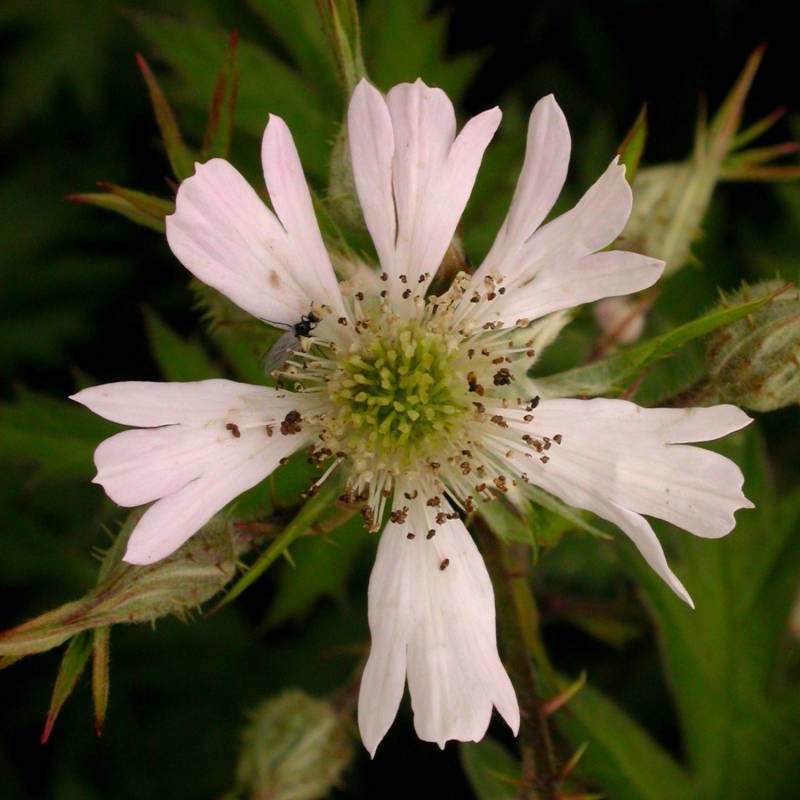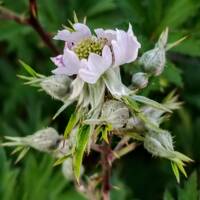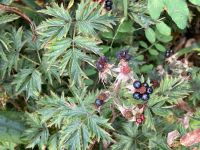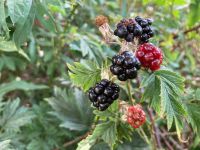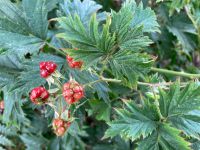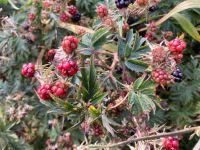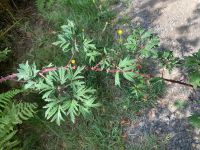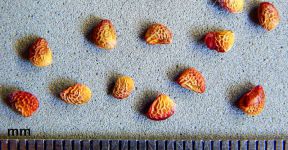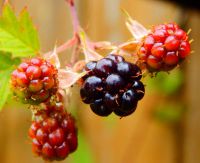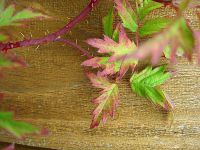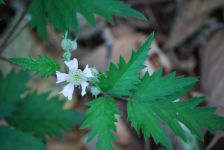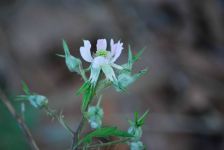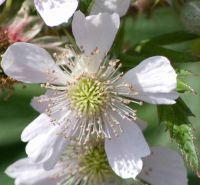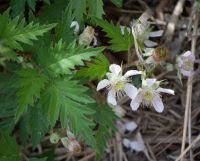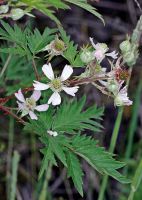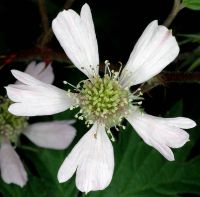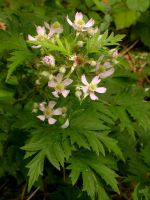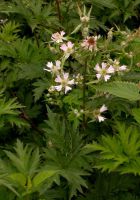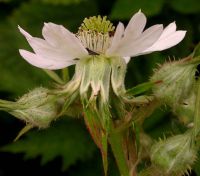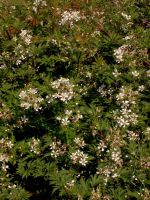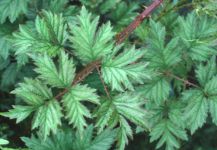Distribution: Occurring chiefly west of the Cascades crest in Washington; British Columbia to California, east to Idaho, Montana, Wyoming, and Colorado.
Habitat: Roadsides, forest understory and edge, thickets, and other disturbed areas, mostly at low elevations.
Flowers: June-August
Origin: Introduced from Europe
Growth Duration: Perennial
Conservation Status: Not of concern
Pollination: Apomixis, bumblebees, bees, beetles
Strongly armed, evergreen perennial with ascending to clambering stems to 10 m. long, the prickles flattened, recurved.
Leaves primarily 5-foliate, from deeply lobed to divided into secondary leaflets, these deeply incised to serrate, green and nearly glabrous above, copiously hairy beneath.
Flowers rather numerous in simple or compound, flat-topped, leafy racemes; calyx woolly and prickly, the 5 lobes lanceolate and tailed, reflexed, 8-15 mm. long; petals 5, pinkish, 9-14 mm. long, obovate and tri-lobed; stamens at least 75, pistils few.
Drupelets coherent, blackberry ovoid, 1-1.5 cm. thick, blackish
Publication: Hort. Berol. pl. 82. 1806.
PNW Herbaria: Specimen records of Rubus laciniatus in the Consortium of Pacific Northwest Herbaria database.
WA Flora Checklist: Rubus laciniatus checklist entry.
OregonFlora: Rubus laciniatus information.
E-Flora BC: Rubus laciniatus atlas page.
CalPhotos: Rubus laciniatus photos.
USDA Plants: Rubus laciniatus information.

